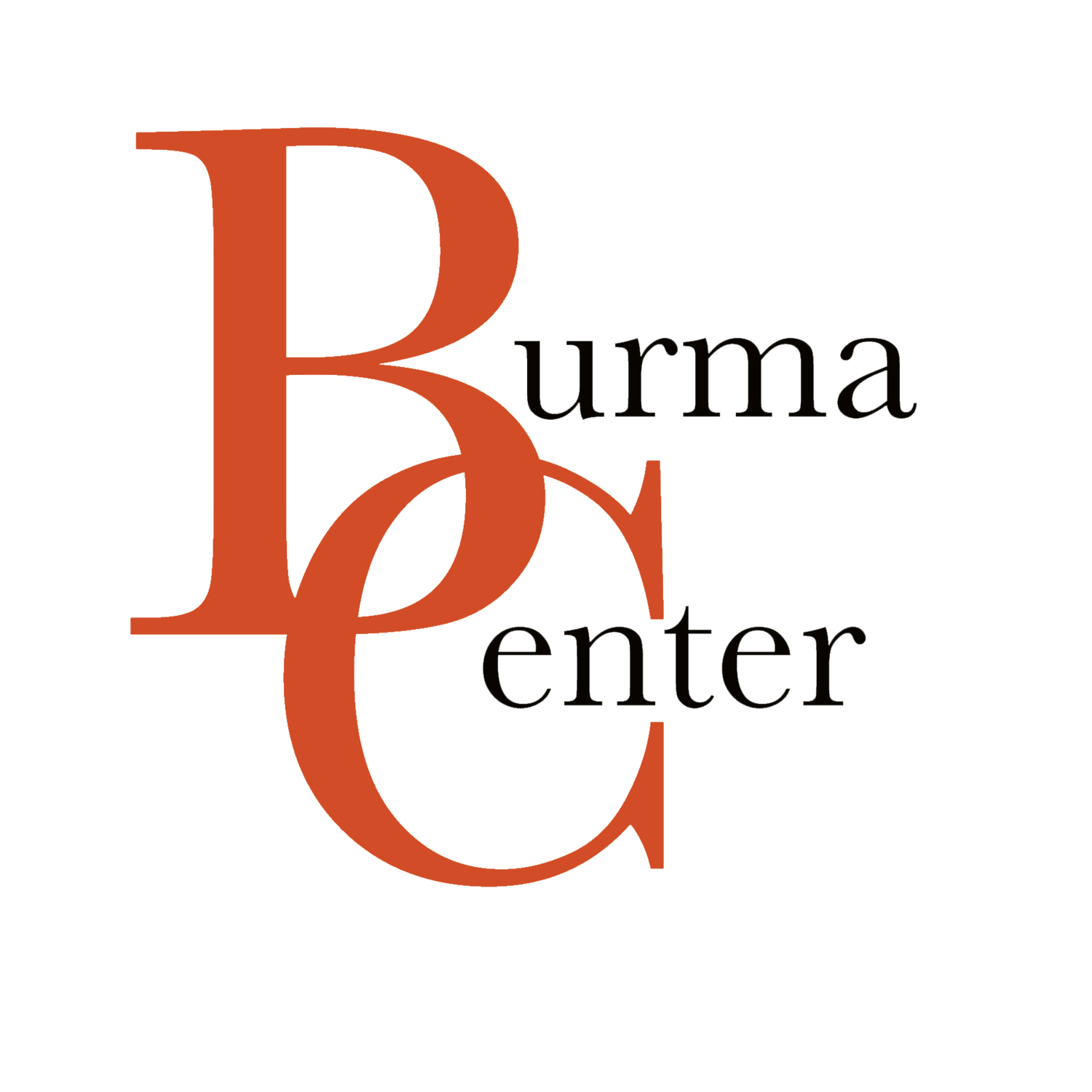About the Myanmar Coup
On February 1, 2021, Myanmar's military, known as the Tatmadaw, took over the democratically-elected government, the National League for Democracy (NLD). The Tatmadaw arrested NLD officials, including Aung San Suu Kyi and many other top civilian leaders.
[Image description: Protesters holding signs in Myanmar. The largest sign is a black square with a large red circle in the center overlaid with images of five hands raised in three-finger salutes and two white doves flying above them. Another protester holds a printed sheet with the words "Free Daw Aung San Suu Kyi" at the bottom and an image of her face filling the right half of the page.] Learn more here.
Citizens immediately responded by protesting the coup. The resistance has continued for months and is now known as the Civil Disobedience Movement, or CDM for short. The Tatmadaw, led by General Min Aung Hlaing, has retaliated with ever-increasing violence toward protesters. Many thousands have been arrested and many hundreds have been killed.
The military has also been targeting religious and ethnic minorities. The Rohingya are perhaps the most well-known of these, as their persecution pre-dates the coup. There are many other groups being persecuted right now as well. The Tatmadaw have raided many villages, attacking civilians - including children - with advanced weapons, sometimes even air strikes, along with less technologically-sophisticated but no less brutal methods like rape and torture.
Thousands of people have been forced to flee their homes and are seeking refuge in neighboring countries such as Thailand, where they are being turned back at the borders. (Refusing entry to a person seeking asylum is a violation of international law. Learn more here.)
The Civil Disobedience Movement continues despite the military's brutality. Many ethnic groups have their own militias that they are using to fight back against the military as well. A shadow government has also formed. It is called the National Unity Government (NUG), and its members are ready to take back democratic leadership of the country as soon as the military is removed from power.
The Burma Center stands in solidarity with all those resisting. We are supporting each other in the local Burmese community as we grieve together and organize to advocate for democracy and human rights in Myanmar.
For more information about the coup, visit the resources below.
Council on Foreign Relations
[Image description: a crowd of protesters in Myanmar. They are wearing masks and many have their hands raised in a three-finger salute. In the center a protester holds a photo of General Min Aung Hlaing with a large red X drawn across his face.]
This report, published Feb 10, 2021, will answer many of your basic questions about the coup.
CSOs & NGOs
Civil Society Organizations & Non-Governmental Organizations
Because the military in Myanmar currently controls so much of the information being "officially" released, it's really important to pay attention to what independent, citizen-led organizations are saying. Click the logo for any of these to learn more:
[Image description: Logo for the Chin Human Rights Organization. A graphic on the left in blue tones with an arrow names "25 years" that the CHRO has been in operation. Next to that a blue logo that looks like a feather facing downward with a pen nib at the bottom. The pen overlays a blue circle and a length of barbed wire. Text in black on the right side reads "Chin Human Rights Organization" in English and Burmese.]
[Image description: Logo for the Shan Women's Action Network (SWAN). Text shaped in a circle surrounds an image of a person dancing in traditional regalia with the fabric flowing out behind the dancer in a way that represents perhaps the wings of a swan. The circular text reads "Swan Women's Action Network" in English above and Burmese below.


![[Image description: Protesters holding signs in Myanmar. The largest sign is a black square with a large red circle in the center overlaid with images of five hands raised in three-finger salutes and two white doves flying above them. Another protester holds a printed sheet with the words "Free Daw Aung San Suu Kyi" at the bottom and an image of her face filling the right half of the page.] Learn more here.](https://images.squarespace-cdn.com/content/v1/60f97e4814b3a868ed3a5f76/1629312807217-GP6Y2PLQO2W6MOWDKAKK/web.jpg)
![[Image description: a crowd of protesters in Myanmar. They are wearing masks and many have their hands raised in a three-finger salute. In the center a protester holds a photo of General Min Aung Hlaing with a large red X drawn across his face.]](https://images.squarespace-cdn.com/content/v1/60f97e4814b3a868ed3a5f76/1629473995253-I76TZLHICTX6H3EQL4DU/download.jpg)
![[Image description: Logo for the Karen Human Rights Group. The letters KHRG in a white outline at the left. Text on the right reads "Karen Human Rights Group" above a white line. Below the line are the words "Documenting the voices of villagers in rural Burma."]](https://images.squarespace-cdn.com/content/v1/60f97e4814b3a868ed3a5f76/1629475293092-9560B7NOW3LA2C6BZ4JL/background_default_img-_0.jpg)
![[Image description: Logo for the Chin Human Rights Organization. A graphic on the left in blue tones with an arrow names "25 years" that the CHRO has been in operation. Next to that a blue logo that looks like a feather facing downward with a pen nib at the bottom. The pen overlays a blue circle and a length of barbed wire. Text in black on the right side reads "Chin Human Rights Organization" in English and Burmese.]](https://images.squarespace-cdn.com/content/v1/60f97e4814b3a868ed3a5f76/1629475350389-PL4CWORWWU0WJMGRSBOL/CHRO-25-Ani_wp.png)
